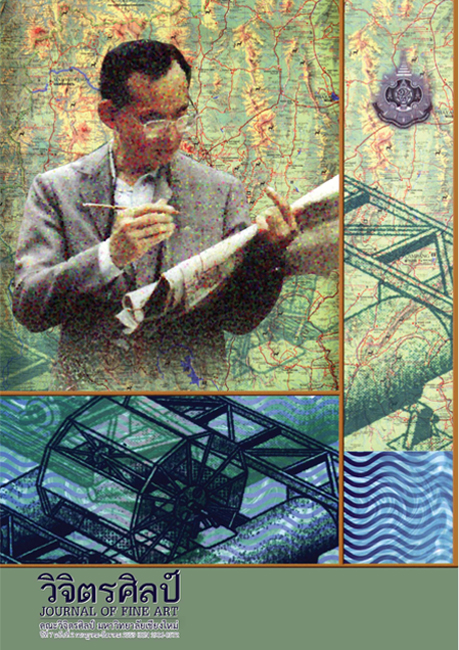เทศน์มหาชาติล้านนา: ลักษณะเฉพาะทางดุริยางคศิลป์ที่พบในการเทศน์ของพุทธศาสนาเถรวาท
Main Article Content
Abstract
งานวิจัยเรื่องเทศน์มหาชาติล้านนา: ลักษณะเฉพาะทางดุริยางคศิลป์ที่พบในประเพณีศาสนา มีวัตถุประสงค์เพื่อศึกษาบริบทที่เกี่ยวข้องกับประเพณีเทศน์มหาชาติในวัฒนธรรมล้านนาและเพื่อวิเคราะห์ทำนองเทศน์มหาชาติกัณฑ์มัทที กัณฑ์กุมารและกัณฑ์มหาราชโดยใช้วิธีการวิจัยเชิงคุณภาพเก็บข้อมูลในภาคเหนือรวม 8 จังหวัดระหว่าง พ.ศ. 2551-2556 ร่วมกับการสัมภาษณ์พระภิกษุนักเทศน์ 11 รูป ความเชื่อเรื่องอานิสงส์การฟังเทศน์มหาชาติยังมีความสำคัญในสังคมล้านนา ในปัจจุบันมี 2 รูปแบบคือการเทศน์ประจำปีแบบดั้งเดิม และแบบการสืบชะตาอายุซึ่งพบเฉพาะในเทศน์มหาชาติล้านนา ส่วนทำนองนั้นมีทั้งลักษณะร่วมและมีความแตกต่างกันในแต่ละจังหวัด ทำ นองเฉพาะในการเทศน์เรียกว่าระบำ มี 7 ทำนองแบ่งออกได้เป็น 2 ประเภทคือทำนองที่ใช้ในการเทศน์ทั่วไป และทำนองที่ใช้ในการเทศน์มหาชาติเท่านั้น ทำนองธรรมวัตรและทำนองไก่สับด้งเป็นทำนองที่ใช้เดินธรรม ใช้เป็นทำนองเทศน์ในการเทศน์มหาชาติ ส่วนทำนองม้ายํ่าไฟ มะนาวล่องของ นํ้าตกตาด หมาไต่คันนาและพร้าวไกวใบ ใช้เฉพาะในเทศน์มหาชาติ การจัดแบ่งหน้าที่ของทำนอง การใช้ลมหายใจยาว การใช้ทำนองเฉพาะ การใช้เอื้อนเสียงยาว การใช้กลุ่มเสียงอ้างอิง และการจัดระดับเสียงเป็นลักษณะสำคัญของเทศน์มหาชาติ
Recitation of Maha Jataka in Lanna: Musical Characteristics of Melodic Preaching in Theravada Buddhist Tradition
This research project aims to study the context of Maha Jataka Festival in the northern part of Thailand and to analyze its chanting melodies. The scope of the study focuses on eight province of Lanna culture. By employing qualitative research methodology, I conducted fieldwork between 2009 - 2013, observing two Maha Jataka festivals, and interviewing eleven chanting priests in Lanna. The Maha Jataka Festival in Lanna is unique in that it incorporates the Suebchata ritual as part of the festival. It is therefore two categories of Lanna Maha Jataka Festival can be inferred: (1) annual Maha Jataka festival, and (2) Suebchata Maha Jataka Festival. Maha Jataka chanting is aesthetically and acoustically delivered by a solo male priest to mediate meanings of the teachings by designated melodies called Rabam. They are assigned to accompany Maha Jataka chanting. Seven types of melodic chanting were found: (1) Dharmavaddha, (2) kai sub dong, (3) ma yam fai, (4) manao long khong, (5) nam tok tad, (6) ma tai kan na, and (7) prao kwai bai. The first two types of melodic preaching are used in both general Buddhist preaching and in the festival. The other five types are used in the contexts of the Maha Jataka festival only. In conclusion, Maha Jataka chanting in Lanna is characterized by its extended pitch-bending, extended breathing, melodic phrasing, specific appropriation of melodies, pitch referencing, and classifications of male priests’ vocal quality.


